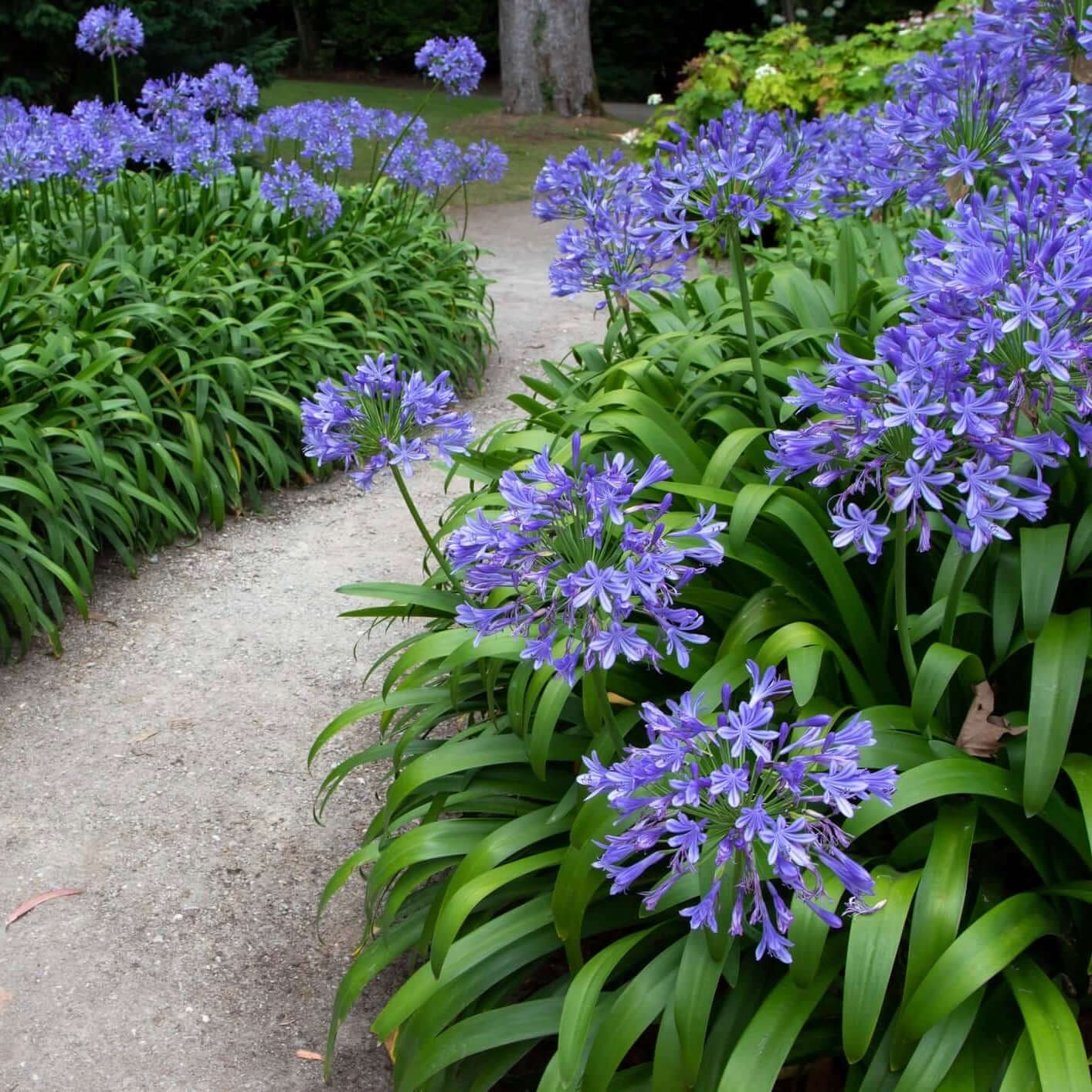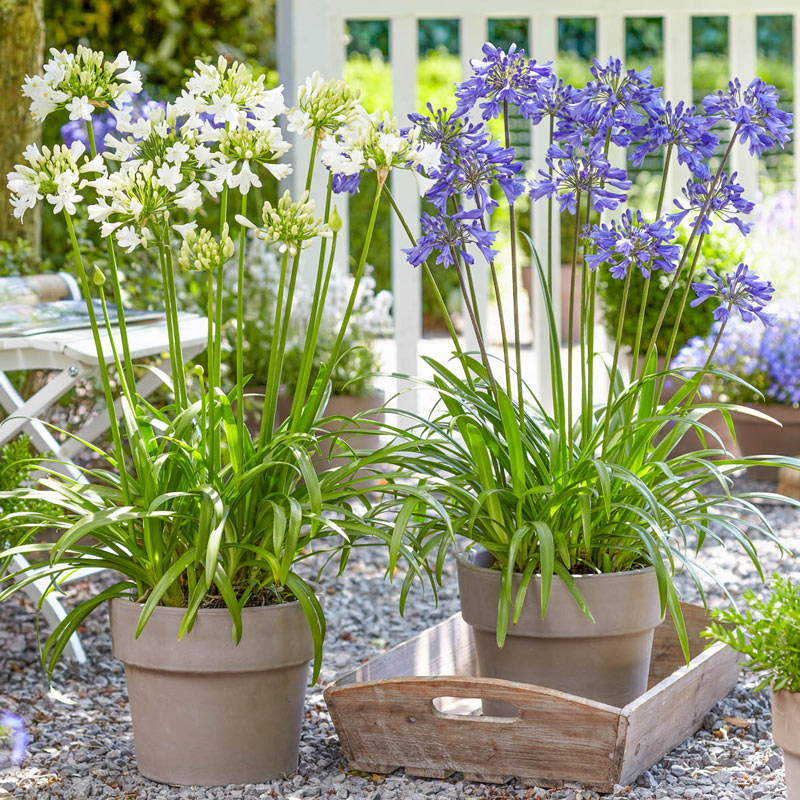Expanding Agapanthus: A Complete Guide to Beautiful Blooms
Expanding Agapanthus: A Complete Guide to Beautiful Blooms
Blog Article
Letting Loose the Secret to Effective Agapanthus Cultivation: Idea for a Flourishing Garden
In the realm of gardening, growing agapanthus effectively needs a critical strategy that incorporates numerous elements of plant care. With careful attention to detail, one can open the keys to supporting these magnificent flowers, bring about a yard that grows with appeal and vibrancy. By recognizing the subtleties of agapanthus growing, one can create an environment where these plants thrive and bloom perfectly. In the adhering to conversation, we will explore crucial tips and methods that will certainly assist you towards a flourishing agapanthus yard, using insights right into ideal methods, soil problems, sprinkling techniques, and a lot more.
Growing Agapanthus: Best Practices
When growing Agapanthus, appropriate dirt preparation is important for ensuring effective growth and growth of these stunning blossoms. Agapanthus, frequently understood as Lily of the Nile or African lily, thrives in well-draining dirt with a slightly acidic to neutral pH degree - Agapanthus. Before growing, it is essential to change heavy clay dirts with raw material such as garden compost or peat moss to improve water drainage and supply essential nutrients for the plants
To grow Agapanthus, choose a place that obtains full sunshine to partial color, as this will advertise healthy growth and bountiful blooming. Dig an opening twice the size of the plant's root sphere and position the Agapanthus at the same depth it was previously growing. Delicately backfill the hole with soil, pushing down strongly to remove any type of air pockets around the roots.
Water the recently grown Agapanthus extensively and continue to keep the dirt equally wet, especially throughout the plant's energetic expanding period. Agapanthus. Using a balanced fertilizer once a month can better sustain the plant's growth and flowering. By adhering to these best methods for growing Agapanthus, you can create a stunning display of these fascinating blossoms in your garden
Ideal Soil Conditions for Agapanthus
For optimum development and blooming success of Agapanthus plants, guaranteeing the soil conditions are suitable is crucial. Agapanthus flourishes in well-draining soil with a slightly acidic to neutral pH level ranging from 6.0 to 7.0. This sort of soil enables adequate water drainage, avoiding waterlogging which can cause root rot. To improve soil drain, think about adding organic matter such as compost or peat moss when preparing the planting site. Moreover, Agapanthus prefers dirt that is rich in nutrients, so integrating a balanced fertilizer during the expanding period can advertise healthy development and vivid blossoms.

Watering and Fertilizing Tips
To guarantee healthy growth and vivid blossoms, correct watering and feeding methods are necessary for successful Agapanthus cultivation. Agapanthus plants benefit from normal watering, particularly throughout the growing period.
When it involves feeding Agapanthus, a balanced fertilizer with equivalent components nitrogen, phosphorus, and potassium can be applied in the spring to promote healthy development and blooming. Slow-release fertilizers are perfect for providing nutrients progressively over an extensive period. Avoid over-fertilizing, as this can lead to too much foliage development at the cost of blooms.
In addition, integrating raw material like compost right into the dirt can improve nutrient degrees and enhance soil structure, aiding in the total health and wellness of the Agapanthus plants. By following these watering and feeding suggestions, gardeners can guarantee their Agapanthus plants thrive and generate spectacular display screens of flowers.
Trimming and Deadheading Techniques
Correct pruning and deadheading strategies play a vital role in keeping the health and visual appeals of Agapanthus plants, enhancing the vital techniques of watering and fertilizing for effective cultivation. Trimming Agapanthus includes removing spent blossom heads, yellowing or dead leaves, and total shaping of the plant to promote much better development. Deadheading, the procedure of eliminating faded flowers, not only improves the plant's appearance yet also motivates more blooming.
When deadheading Agapanthus, it is a good idea to trim off the flower stem at the base utilizing sharp, tidy shears. This process redirects the plant's energy from seed manufacturing back Click This Link right into origin and foliage growth, promoting a much healthier and extra robust plant. Routine deadheading can prolong the growing duration of Agapanthus and prevent self-seeding, which can result in overcrowding.
In terms of pruning, Agapanthus generally take advantage of a light trim after flowering to clean up the plant and motivate fresh growth. Reducing the invested blossom stems and eliminating any type of damaged or dead foliage helps preserve the plant's vigor and overall look. Nonetheless, it is necessary to avoid reducing right into the crown of the plant, as this can deteriorate its health and wellness.

Protecting Agapanthus From Pests and Diseases
Implementing reliable bug and illness management approaches is critical to securing the health and wellness and vitality of Agapanthus plants in farming. Agapanthus are typically hardy plants, yet they can still come down with numerous parasites and illness otherwise appropriately taken care of. One usual bug that affects Agapanthus is the Agapanthus borer, a caterpillar that passages into the plant, causing damage to the blossoms and leaves. To stop problems, regular examination of the plants is crucial. If borers are detected, they can be by hand removed, or insecticidal soap can be made use of as a control measure.
In enhancement to parasites, Agapanthus are at risk to diseases such as root rot and fungal leaf spots. By staying watchful and addressing pest and see here now disease concerns without delay, garden enthusiasts can assist their Agapanthus prosper and grow.

Conclusion
In verdict, successful farming of agapanthus requires appropriate growing techniques, suitable soil conditions, appropriate watering and feeding, regular pruning and deadheading, and defense from pests and illness. By complying with these pointers and tricks, gardeners can guarantee a growing yard loaded with gorgeous agapanthus flowers. Agapanthus. Bear in mind to keep consistent care and interest to detail to promote the health and wellness and longevity of these spectacular plants
When growing Agapanthus, proper dirt preparation is crucial for ensuring successful growth and advancement of these stunning blossoms.Water the newly planted Agapanthus completely and proceed to maintain the soil uniformly damp, particularly during the plant's active growing season.For ideal growth and flowering success of Agapanthus plants, making sure the soil conditions are optimal is vital. When growing or hair transplanting Agapanthus, make sure the dirt is well-prepared More Bonuses to give the essential structure for the plants to establish themselves successfully. One common pest that affects Agapanthus is the Agapanthus borer, a caterpillar that tunnels right into the plant, causing damages to the fallen leaves and flowers.
Report this page